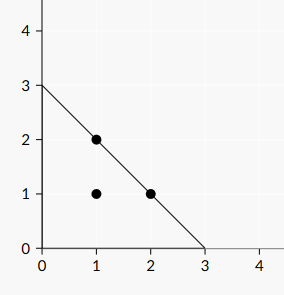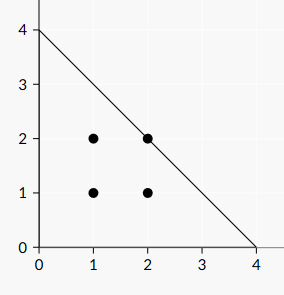| Codeforces Round 511 (Div. 2) |
|---|
| Finished |
→ Virtual participation
Virtual contest is a way to take part in past contest, as close as possible to participation on time. It is supported only ICPC mode for virtual contests.
If you've seen these problems, a virtual contest is not for you - solve these problems in the archive.
If you just want to solve some problem from a contest, a virtual contest is not for you - solve this problem in the archive.
Never use someone else's code, read the tutorials or communicate with other person during a virtual contest.
→ Problem tags
geometry
math
*900
No tag edit access
→ Contest materials
The problem statement has recently been changed. View the changes.
×
B. Cover Points
time limit per test
1 secondmemory limit per test
256 megabytesinput
standard inputoutput
standard outputThere are $$$n$$$ points on the plane, $$$(x_1,y_1), (x_2,y_2), \ldots, (x_n,y_n)$$$.
You need to place an isosceles triangle with two sides on the coordinate axis to cover all points (a point is covered if it lies inside the triangle or on the side of the triangle). Calculate the minimum length of the shorter side of the triangle.
Input
First line contains one integer $$$n$$$ ($$$1 \leq n \leq 10^5$$$).
Each of the next $$$n$$$ lines contains two integers $$$x_i$$$ and $$$y_i$$$ ($$$1 \leq x_i,y_i \leq 10^9$$$).
Output
Print the minimum length of the shorter side of the triangle. It can be proved that it's always an integer.
Examples
Input
3
1 1
1 2
2 1
Output
3
Input
4
1 1
1 2
2 1
2 2
Output
4
Note
Illustration for the first example: 
Illustration for the second example: 
Codeforces (c) Copyright 2010-2024 Mike Mirzayanov
The only programming contests Web 2.0 platform
Server time: Apr/19/2024 08:43:09 (j3).
Desktop version, switch to mobile version.
Supported by
User lists


| Name |
|---|




